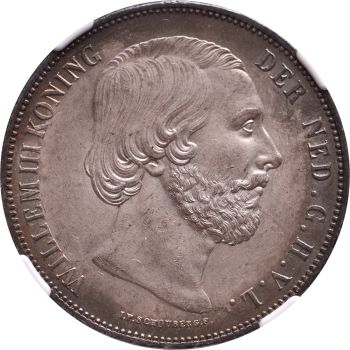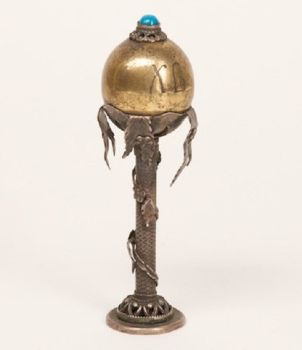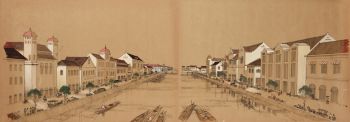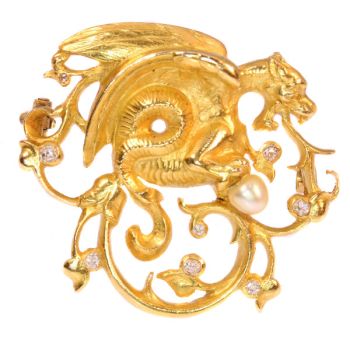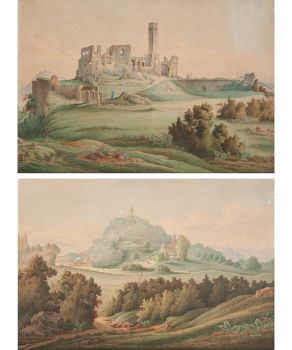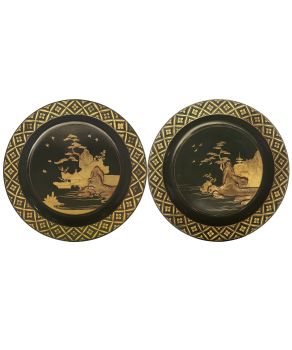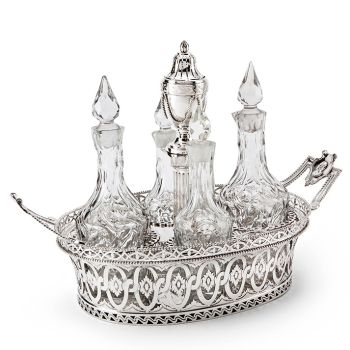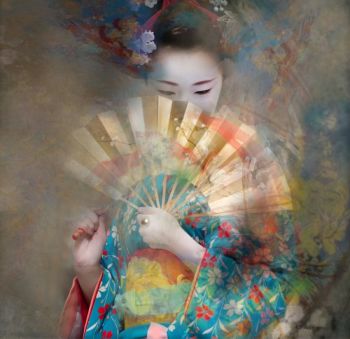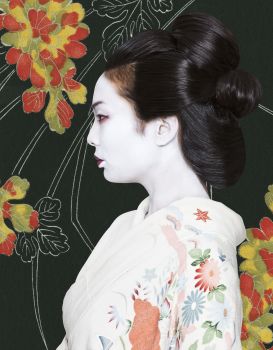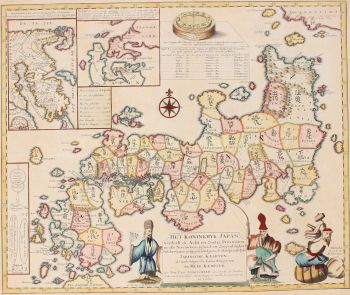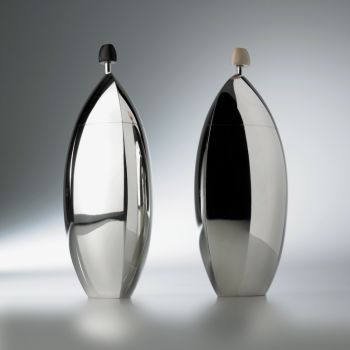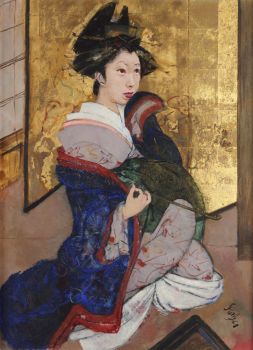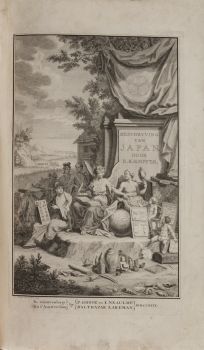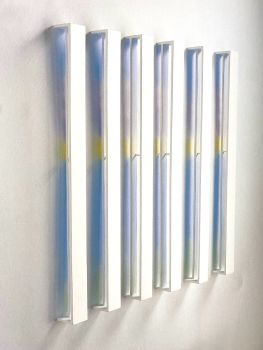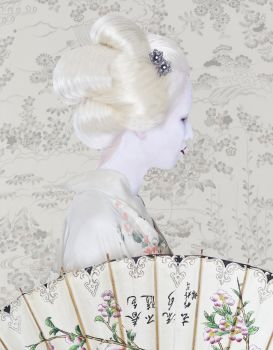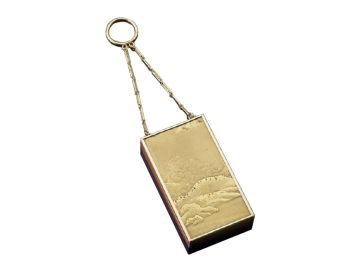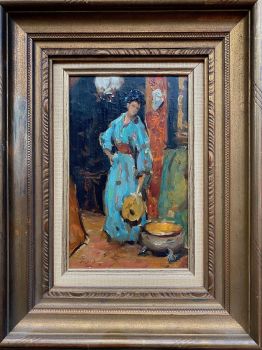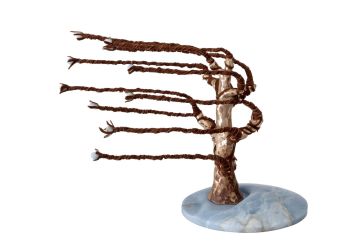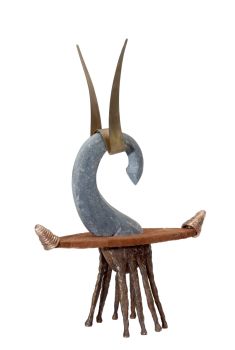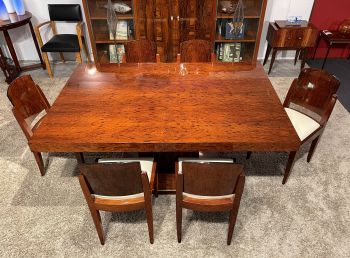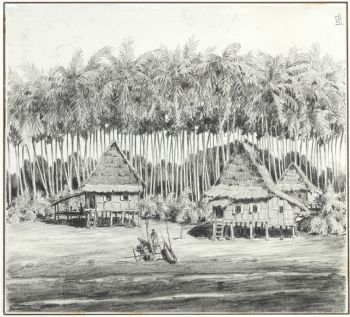UM RARO GRANDE TELESCÓPIO DE COURO LACADO JAPONÊS 1750 - 1800
Artista Desconhecido
Couro
Preço em pedido
Zebregs & Röell - Fine Art - Antiques
- Sobre arteA RARE LARGE JAPANESE LACQUERED LEATHER TELESCOPE
Edo Period, late 18th century
In four sections, the smaller innermost end fitted with a cow horn disc pierced with a central hole to maximise the use of the centre of the lens and the largest, outermost section finished with a copper disk with a central hole, all four sections of lacquered leather embossed and applied with gold lacquer on a black ground with bands of European style patterns including flowers, scrolling foliage and geometric designs, two covers for both ends.
L. 32 cm (retracted with the two end covers)
L, 87 cm (fully extended)
Note:
The first telescope to arrive in Japan was a gift from King James I (1566-1625) to the Shogun Tokugawa Ieyasu (1543-1616) in 1613. The Shogun made good use of his telescope during his battles and since then the Shogun and many of the country rulers asked the VOC, the Dutch East India Company based on the island of Deshima in the bay of Nagasaki, for telescopes as a tribute. At the end of the seventeenth century making of telescopes started in Japan, mainly in Nagasaki. The best known opticians during the Edo Period were Mori Nizaemon (1673-1754) of Nagasaki and Iwahashi Zenbei (1756-1811) of Osaka. The important role played by telescopes, of both European and Japanese manufacture, in the visual culture of the Edo Period is discussed in detail in Timon Screech, The Western Scientific Gaze and Popular Imagery in Later Edo Japan, (Cambridge, 1996).
For a similar example see NHK Service Centre and Siebold Council, Chikuzo 350-shunen Nagasaki Dejima ten (Exhibition commemorating the 350th anniversary of Deshima in Nagasaki, Tokyo and Osaka, 1986, cat. no. 134) for another example see Doris Croissant and Lothar Ledderose (eds.), Japan and Europe, 1543-1929 (pl. 61 in the exhibition catalogue: Berlin, Argon Verlag, 1993) there is an example in the Kobe Museum collection and two further examples of glass tube telescopes are in my catalogue Uit Verre Streken, Maastricht March 2015, cat. no. 59 and 60. - Sobre artista
Pode acontecer que um artista ou criador seja desconhecido.
Algumas obras não devem ser determinadas por quem são feitas ou são feitas por (um grupo de) artesãos. Exemplos são estátuas dos tempos antigos, móveis, espelhos ou assinaturas que não são claras ou legíveis, mas também algumas obras não são assinadas.
Além disso, você pode encontrar a seguinte descrição:
•"Atribuído a …." Na opinião deles, provavelmente uma obra do artista, pelo menos em parte
• “Estúdio de…” ou “Oficina de” Em sua opinião um trabalho executado no estúdio ou oficina do artista, possivelmente sob sua supervisão
• "Círculo de ..." Na opinião deles, uma obra da época do artista mostrando sua influência, intimamente associada ao artista, mas não necessariamente seu aluno
•“Estilo de…” ou “Seguidor de…” Na opinião deles, um trabalho executado no estilo do artista, mas não necessariamente por um aluno; pode ser contemporâneo ou quase contemporâneo
• "Maneira de ..." Na opinião deles, uma obra no estilo do artista, mas de data posterior
•"Depois …." Na opinião deles uma cópia (de qualquer data) de uma obra do artista
• “Assinado…”, “Datado…” ou “Inscrito” Na opinião deles, a obra foi assinada/datada/inscrita pelo artista. A adição de um ponto de interrogação indica um elemento de dúvida
• "Com assinatura ….”, “Com data ….”, “Com inscrição ….” ou “Tem assinatura/data/inscrição” na opinião deles a assinatura/data/inscrição foi adicionada por outra pessoa que não o artista
Você está interessado em comprar esta obra de arte?
Artwork details
Related artworks
Artista Desconhecido
Pulseira de diamante do século 18 com entalhes de 2.000 anos1790
€ 23.000Adin Fine Antique Jewellery
 Com curadoria de
Com curadoria deDanny Bree
Artista Desconhecido
Silver Russian Presentation Easter Egg1880 - 1899
Preço em pedidoH.W.C. Dullaert Art & Antiques Dealer
1 - 4 / 12Artista Desconhecido
The Stamford Raffles Secretaires.1800 - 1813
Preço em pedidoZebregs & Röell - Fine Art - Antiques
1 - 4 / 21Artista Desconhecido
The Stamford Raffles Secretaires.1800 - 1813
Preço em pedidoZebregs & Röell - Fine Art - Antiques
1 - 4 / 24Engelbert Kaempfer
LIVRO ENGELBERT KAEMPFER1651 - 1716
Preço em pedidoZebregs & Röell - Fine Art - Antiques
1 - 4 / 24- 1 - 4 / 14
Artista Desconhecido
Holandeses em miniatura (Netsuke)1700 - 1900
Preço em pedidoZebregs & Röell - Fine Art - Antiques
1 - 4 / 12



